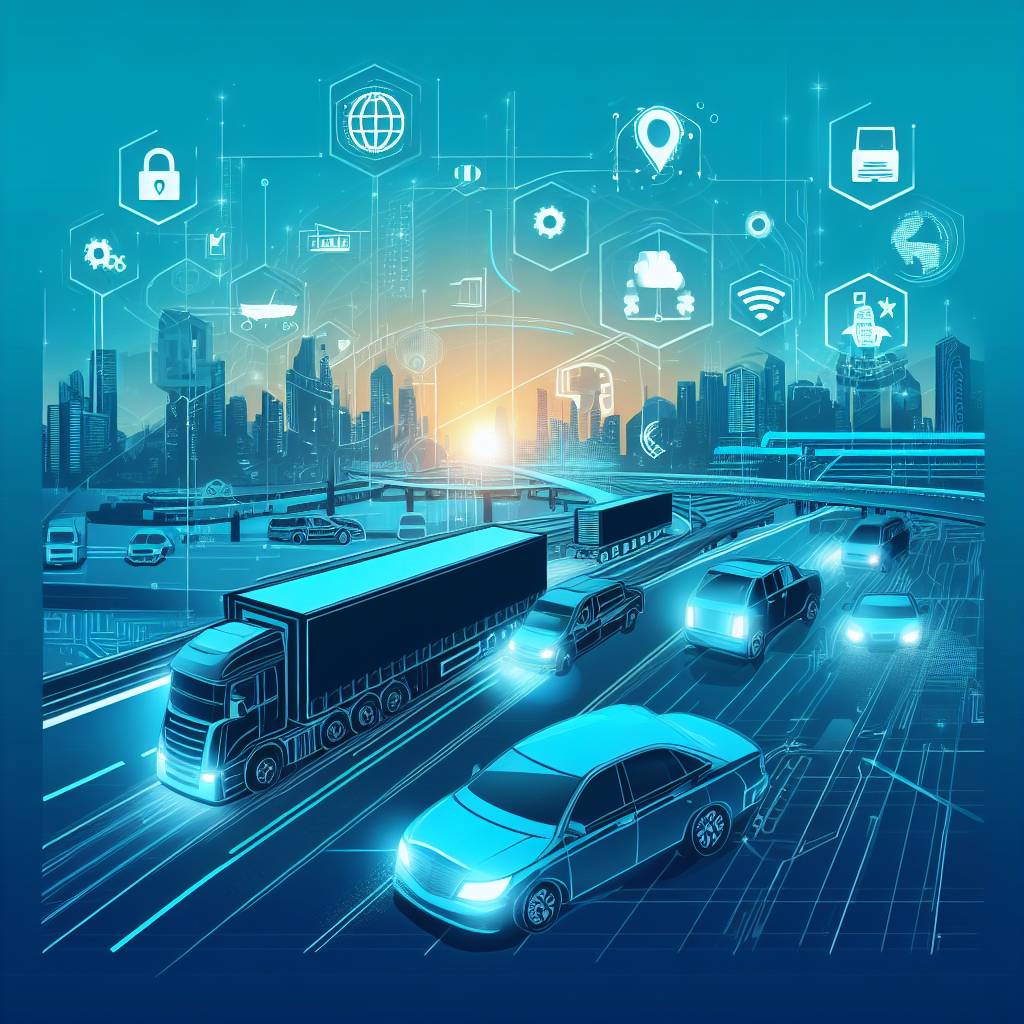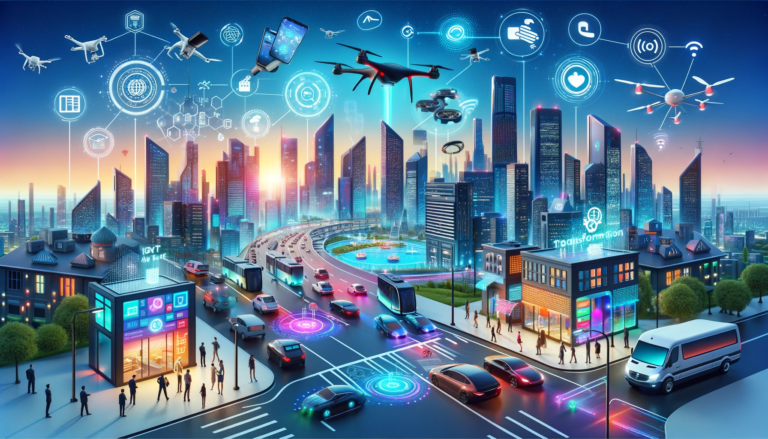Introduction to IoT in Transportation
The Internet of Things (IoT) is revolutionizing the transportation industry by enhancing efficiency, safety, and passenger experience. IoT in transportation involves the integration of various technologies and devices, such as sensors, actuators, and data collection and transmission systems, to create a more efficient, safe, and seamless transportation experience.
Benefits of IoT in Transportation
· Improved Efficiency
IoT in transportation improves efficiency by reducing travel time, waiting time, and fuel consumption. Real-time traffic information, adaptive traffic control systems, and vehicle-to-infrastructure (V2I) communication enable drivers to plan optimal routes, avoid traffic congestion, and reduce emissions.
· Enhanced Safety
IoT devices and sensors can detect dangerous situations and alert drivers in real-time, reducing the risk of accidents. Additionally, connected vehicles can communicate with each other and infrastructure, creating a virtual safety net that enhances safety for all road users.
· Better Passenger Experience
IoT in transportation enhances the passenger experience by offering personalized services, such as climate control, entertainment options, and real-time information on delays and schedules. Passengers can also enjoy a seamless travel experience, as IoT enables smooth boarding and baggage handling processes.

IoT Applications in Transportation
Vehicle Telematics
Vehicle telematics combines IoT, GPS, and mobile technology to track and monitor vehicles, providing valuable data on driver behavior, vehicle performance, and route optimization. This information can help reduce fuel costs, improve safety, and enhance overall fleet management.
Public Transport Management
IoT devices can improve public transport management by providing real-time information on bus and train schedules, route planning, and ticket purchasing. Passengers can enjoy a more convenient and efficient travel experience, while transportation providers can optimize their routes and schedules for maximum efficiency.
Traffic Congestion Control
IoT in transportation can help control traffic congestion by collecting real-time data on traffic flow, road conditions, and public transportation usage. This information can be used to implement dynamic traffic management strategies, such as adjusting traffic lights, changing road signs, and optimizing public transportation schedules.
Security and Surveillance Systems
IoT security in transportation is crucial to protect sensitive data and prevent unauthorized access to vehicles and infrastructure. Security systems can include vehicle security systems, public transport security solutions, and infrastructure security and monitoring.
IoT Infrastructure and Technologies
Sensors and Actuators
IoT in transportation relies on sensors and actuators to collect and transmit data. These devices can monitor various parameters, such as temperature, pressure, and motion, providing valuable insights into vehicle performance, passenger comfort, and infrastructure conditions.
Data Collection and Transmission
Data collected from sensors and other IoT devices is transmitted via cellular or wireless networks to a cloud-based data storage and analytics platform. Advanced analytics algorithms can process the data to provide actionable insights, enabling transportation providers to make data-driven decisions and optimize their operations.
Cloud Computing and Data Analytics
Cloud computing plays a crucial role in IoT in transportation by providing the necessary infrastructure for data storage, processing, and analytics. Advanced analytics algorithms can process the data collected from IoT devices to provide valuable insights, enabling transportation providers to make data-driven decisions and optimize their operations.
IoT in Transportation Security
Vehicle Security Systems
Vehicle security systems protect connected cars from cyber threats, ensuring the safety of drivers and passengers. These systems can include firewalls, intrusion detection systems, and remote updates for vehicle software.
Public Transport Security Solutions
Public transport security solutions monitor and protect passengers and infrastructure from potential threats. IoT-based security systems can include surveillance cameras, access control systems, and real-time monitoring of public transportation networks.
Infrastructure Security and Monitoring
IoT in transportation security also extends to infrastructure security and monitoring. By connecting infrastructure components to the IoT, transportation providers can monitor their performance, detect potential issues, and ensure the smooth operation of their transportation networks.
Case Studies and Examples of IoT in Transportation
· Smart Bus System in London
The Smart Bus System in London uses IoT technology to provide real-time information on bus locations, schedules, and route planning. This system has significantly improved public transportation efficiency and passenger satisfaction in the city.
· Intelligent Traffic Management in Singapore
Intelligent Traffic Management in Singapore uses IoT devices to collect real-time data on traffic flow, road conditions, and public transportation usage. This information is used to implement dynamic traffic management strategies, such as adjusting traffic lights, changing road signs, and optimizing public transportation schedules.
The Future of IoT in Transportation
Emerging Trends and Technologies
The future of IoT in transportation will be shaped by emerging trends and technologies, such as autonomous vehicles, electric vehicles, and the integration of artificial intelligence (AI) and machine learning (ML) in transportation systems. These advancements will continue to enhance efficiency, safety, and passenger experience in the transportation industry.
Potential Challenges and Solutions
One of the main challenges in IoT in transportation is ensuring data security and privacy. As connected vehicles and infrastructure become more prevalent, the risk of cyberattacks and data breaches increases. To address these challenges, transportation providers must implement robust security measures and adopt best practices for data management and protection.
Final Thoughts
IoT in transportation is transforming the industry by enhancing efficiency, safety, and passenger experience. By leveraging various technologies and devices, transportation providers can optimize their operations, improve service quality, and create a more seamless travel experience for their customers. As the future of IoT in transportation unfolds, we can expect even more innovative solutions and technologies to emerge, further shaping the landscape of the transportation industry.
1. What is IoT in transportation?
IoT in transportation refers to the integration of various technologies and devices, such as sensors, actuators, and data collection and transmission systems, to create a more efficient, safe, and seamless transportation experience.
2. What are the benefits of IoT in transportation?
IoT in transportation offers several benefits, including improved efficiency, enhanced safety, and better passenger experience. Real-time traffic information, adaptive traffic control systems, and vehicle-to-infrastructure (V2I) communication enable drivers to plan optimal routes, avoid traffic congestion, and reduce emissions. IoT devices and sensors can detect dangerous situations and alert drivers in real-time, reducing the risk of accidents. Additionally, connected vehicles can communicate with each other and infrastructure, creating a virtual safety net that enhances safety for all road users.
3. What are some IoT applications in transportation?
IoT applications in transportation include vehicle telematics, public transport management, traffic congestion control, and security and surveillance systems. Vehicle telematics combines IoT, GPS, and mobile technology to track and monitor vehicles, providing valuable data on driver behavior, vehicle performance, and route optimization. IoT devices can improve public transport management by providing real-time information on bus and train schedules, route planning, and ticket purchasing. IoT in transportation can help control traffic congestion by collecting real-time data on traffic flow, road conditions, and public transportation usage. IoT security in transportation is crucial to protect sensitive data and prevent unauthorized access to vehicles and infrastructure.
4. What are some IoT infrastructure and technologies used in transportation?
IoT infrastructure and technologies used in transportation include sensors and actuators, data collection and transmission systems, and cloud computing and data analytics. Sensors and actuators can monitor various parameters, such as temperature, pressure, and motion, providing valuable insights into vehicle performance, passenger comfort, and infrastructure conditions. Data collected from sensors and other IoT devices is transmitted via cellular or wireless networks to a cloud-based data storage and analytics platform. Advanced analytics algorithms can process the data to provide actionable insights, enabling transportation providers to make data-driven decisions and optimize their operations.
5. What are some examples of IoT in transportation?
Some examples of IoT in transportation include the Smart Bus System in London, which uses IoT technology to provide real-time information on bus locations, schedules, and route planning, and Intelligent Traffic Management in Singapore, which uses IoT devices to collect real-time data on traffic flow, road conditions, and public transportation usage. IoT-enhanced railways, connected cars, and automated logistics systems are other examples of IoT in transportation.
6. What are the potential risks of IoT in transportation?
The potential risks of IoT in transportation include data security and privacy concerns, cyberattacks, and system failures. As connected vehicles and infrastructure become more prevalent, the risk of cyberattacks and data breaches increases. Transportation providers must implement robust security measures and adopt best practices for data management and protection to address these challenges. Additionally, system failures can lead to disruptions in transportation services, causing inconvenience and potential safety hazards.
7. What is the future of IoT in transportation?
The future of IoT in transportation is promising, with emerging trends and technologies such as autonomous vehicles, electric vehicles, and the integration of artificial intelligence (AI) and machine learning (ML) in transportation systems. These advancements will continue to enhance efficiency, safety, and passenger experience in the transportation industry. However, transportation providers must also address the potential risks and challenges associated with IoT in transportation to ensure a safe and secure transportation ecosystem.




